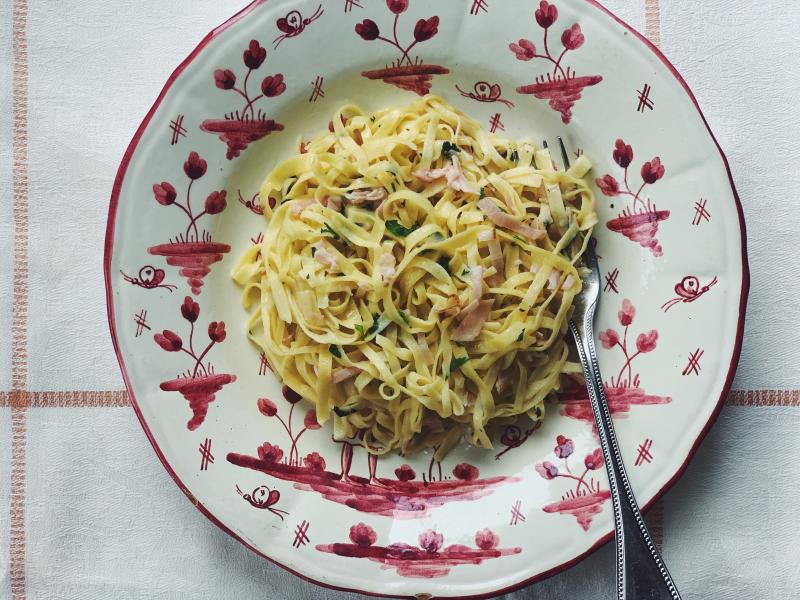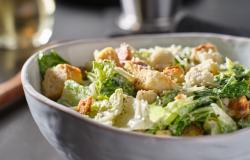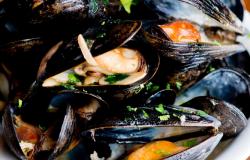This Pasta “alla Claudia Cardinale” Offers a Buttery Break From Spring Salads

Pasta alla Claudia Cardinale can be made with spaghetti, tagliatelle or other long pasta / Photo courtesy of Domenica Marchetti
If the name Claudia Cardinale is familiar to you, it’s likely because you are a person of a certain age, or possibly because you are a Federico Fellini or Luchino Visconti fan, or maybe a Sergio Leone fan — or all of the above! Cardinale, a Tunisian-born Italian-French actress, had her heyday during the era of bombshell actresses, in the company of Sofia Loren, Brigitte Bardot, and Gina Lollobrigida. Among the movies Cardinale starred in were Rocco and His Brothers, and The Leopard, both directed by Visconti; Fellini’s fantastically indulgent 8 1/2; and Leone’s Once Upon a Time in the West.
How a recipe for spaghetti named after her ended up in my mother’s recipe files I don’t know, but I have a hunch it’s thanks to my mom’s oldest sister, Gilda, who kept tabs on the movie stars of that era through the various Italian gossip magazines she read — Gente and Oggi being two of them. I found the recipe while going through my mom’s files a few weeks ago. It’s hand-written in blue pen on a piece of Italian ruled paper that looks like it might have been torn from a notebook. And although the handwriting looks a bit like my mom’s, it also doesn’t look like my mom’s, which makes me think it might be Gilda’s.
It's a simple recipe, in spite of the celebrity name attached to it; essentially spaghetti tossed with melted butter, julienned prosciutto cotto (ham), herbs and lots of grated Parmigiano cheese. There’s something appealingly old-fashioned about it; it’s not “seasonal” or “regional” or any of those other adjectives that Italian cooking is supposed to be these days.
Is it really Claudia Cardinale’s recipe? I have no idea. My guess is that Gilda came across it in one of her magazines and copied it down for her younger sister, my mom, who was the family’s most avid cook. When I googled “Spaghetti alla Claudia Cardinale” I found no recipe (though I did find alluring photos of her circa 1960-something suggestively twirling noodles). In a 1965 interview, the actress told a reporter that she “liked a dry martini before dinner, caviar for hors d'oeuvres, lobsters or oysters for seafood, or a steak alla fiorentina.” When it came to wine, her preference was for rich reds. It seems to me this pasta dish is very much in keeping with her tastes.
Makes 4 generous servings
Bring a large pot of water to a rolling boil and salt it generously.
While the water is heating, make the sauce: Melt the butter in a large skillet set over low heat. While the butter is melting, cut the prosciutto cotto into julienne (thin strips). Finely chop the parsley and basil leaves. When the butter is melted and just beginning to sizzle, add the prosciutto cotto and chopped herbs. Turn off the heat and cover to keep warm.
Cook the spaghetti according to the manufacturer’s instructions until very al dente (slightly underdone). Turn the heat back on under the butter sauce and, using a pasta fork or tongs, transfer the spaghetti to the skillet, along with a ladleful of the pasta water. Toss the spaghetti in the butter sauce until well coated and glossy.
Transfer the pasta to a warmed serving dish and sprinkle liberally with Parmigiano cheese. Toss once more and serve, with more cheese on the side.
NOTE: Prosciutto cotto is simply cooked prosciutto, or cooked ham. In the US, you can find Italian-produced ham, often under the label Parmacotto, in some food markets. Be sure to use a good quality ham, as that will affect the outcome of the dish. When Italian ham is not available, I use thinly sliced, smoked New England or Virginia ham.





